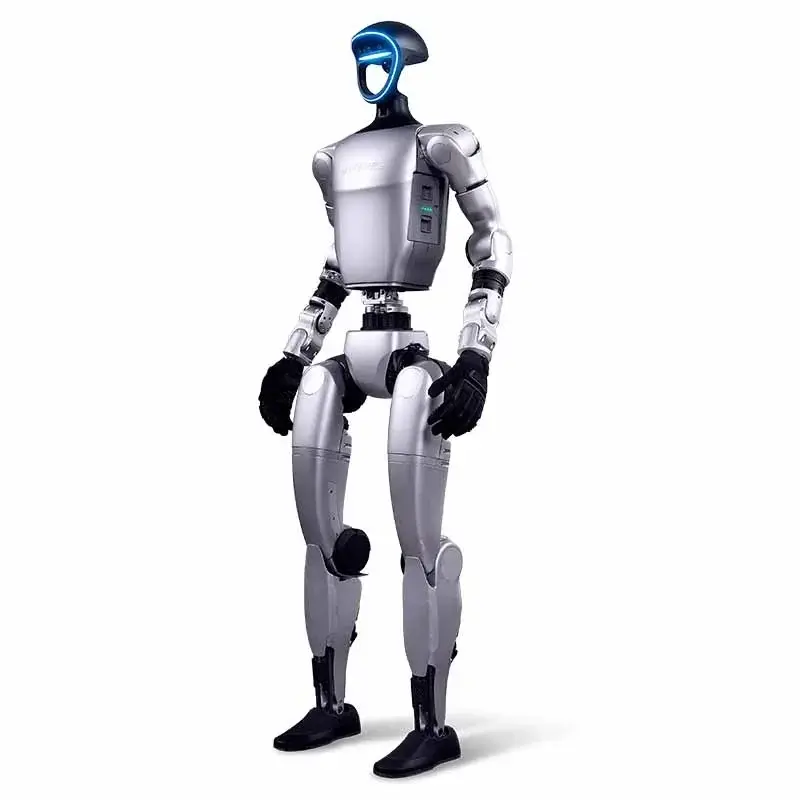Mastering Precision: A Comprehensive Guide to CNC Cylindrical Grinder
In the relentless pursuit of surface perfection and dimensional accuracy, precision grinding has become the cornerstone of modern manufacturing. One of its most critical processes is CNC OD (outside diameter) grinding, a complex technology that is integral to creating a perfect cylindrical surface on turned parts. Whether you are developing aerospace turbines, medical implants or high-performance automotive shafts, understanding CNC outside diameter grinding is key to achieving functional integrity and longevity. This guide delves into the mechanics, benefits, and applications of this important technology, enabling you to make informed decisions for your most demanding projects.
Beyond Manual Limitations: How CNC Cylindrical Grinding Improves Precision
Traditional cylindrical grinding relies heavily on operator skill, limiting repeatability and productivity. CNC technology revolutionized this. Computer numerically controlled machines integrate advanced programming with high-resolution servo motors and feedback systems. Preprogrammed part contours guide the machine, specifying the precise path, depth of cut, speed and feed of the grinding wheel relative to the rotating workpiece. This closed-loop control minimizes human error and enables unparalleled consistency even with complex geometries or large batches. The process usually involves:
- Safe workpiece fixation: The workpiece is mounted securely between centers (using the headstock and tailstock) or in a steady rest/chuck fixture on the work head of a cylindrical grinder. Precision clamping ensures no vibration or deflection.
- Precision grinding wheel selection: Grinding wheels consist of abrasive particles (such as aluminum oxide, cubic boron nitride or diamond) and a bond, selected based on the workpiece material and desired finish. The wheels spin at high speed.
- Computer control: The CNC controller executes the programmed instructions. It coordinates the synchronized rotational speed of the workpiece (via the work head), the rotational and lateral movements of the grinding wheel, and the intermittent dressing (dressing/sharpening) of the grinding wheel itself during the grinding cycle.
- Microscopic material removal: When a rotating grinding wheel contacts a rotating workpiece, it removes material in tiny increments (usually microns per pass). Cutting fluid is continuously applied to cool, remove chips and achieve the desired surface finish.
- In-process measurements (optional): The advanced machines feature integrated probes that take real-time measurements during the grinding process, allowing for instant feedback and automatic tool offset adjustment to achieve perfect tolerances.
Interpret the structure of CNC cylindrical grinder
Understanding the core components will clarify their functionality:
- Sturdy machine base: Heavy-duty cast iron construction minimizes vibration and thermal distortion, providing a stable platform for precision.
- Precision spindle:
- Grinding wheel spindle: High-precision, high-speed spindle driven grinding wheel. Balance stiffness and damping for a fine surface finish.
- Working head spindle: Rotates workpieces at programmed speeds with excellent clamping stability.
- Axis movements (CNC axes): A typical machine has multiple CNC controlled axes:
- X axis: Grinding wheel radial feed.
- Z axis: The grinding wheel moves longitudinally along the length of the workpiece.
- B axis (regular): Angle of rotation of the grinding wheel carriage for tapers or profile profiles.
- C-axis (usually on the work head): Precise rotational positioning of workpieces.
- CNC system: this "brain," Interpret G-code and control every movement and parameter. The modern interface provides simulation, diagnostics and user-friendly programming.
- Dressing unit: Essential for maintaining wheel shape and sharpness. Use a rotating diamond dresser or fixed diamond tool for precise positioning to reshape the grinding wheel profile.
- Cooling system: High-pressure delivery enables effective cooling, lubrication and chip flushing.
- In-process measurement system (optional): Touch probe or laser systems for automatic closed-loop dimensional control.
Excellence is non-negotiable: applications and industries
The signature benefits of CNC OD grinding make it a must-have for industries that demand the highest precision and surface quality:
- aerospace: Turbine shafts, landing gear components, engine valves – critical for safety under extreme pressure.
- car: Driveshafts, CV joints, injector components – ensuring reliability and reducing friction.
- Medical and dental: Surgical instruments (scalpels, drills), orthopedic implants (hip/knee stems), dental tools – biocompatibility and smoothness are critical.
- Power Generation and Hydraulic Systems: Pump shaft, valve stem, piston rod – critical for sealing and wear resistance.
- Tools and molds: Precision punches and forming rolls – require consistent size and surface treatment for long service life.
- semiconductor: Wafer handling components and robotic arms – essential for contamination control and precision movement.
Why CNC cylindrical grinding dominates: Compelling advantages
- Microscopic Precision and Tolerances: Tolerances as low as +/- 0.0001 inches (+/- 0.0025 mm) are consistently achieved, unmatched by most other processes.
- Excellent surface finish: Produces ultra-fine, low Ra/μm surface texture critical for sealing, reducing friction and extending fatigue life.
- Unparalleled repeatability: CNC programming ensures that every part in a batch is nearly identical, which is critical for quality control.
- Complex geometric shapes made simple: Able to easily grind diameters, tapers, complex shapes, fillets, shoulders and undercuts.
- Excellent material removal capabilities on hardened materials: Effectively handles quenched steel, carbide, and ceramics that are difficult to process with traditional processing.
- Improve productivity: Automation (loading/unloading, measuring, dressing) significantly reduces cycle times and labor costs compared to manual grinding.
- Reduce scrap and waste: Precise control minimizes material waste and costly rework.
Choose your CNC Cylindrical Grinding Partner: The GreatLight Advantage
Choosing the right shop isn’t just about the machine, it’s about expertise, the entire ecosystem and commitment. This is what makes GreatLight unique:
- Advanced five-axis CNC infrastructure: We have invested in state-of-the-art multi-axis grinding centers capable of machining simple to extremely complex geometries in a single setup, increasing accuracy and speed.
- Engineering expertise (metals): Our experienced mechanics and engineers are more than just operators; They have a deep understanding of material science, mold dynamics and process optimization. We don’t just deal in parts; We solve manufacturing challenges.
- A true one-stop solution: In addition to grinding, GreatLight integrates seamlessly with our advanced in-house five-axis CNC machining, turning, milling, heat treating and comprehensive finishing services. Streamline your supply chain and guarantee part consistency from blueprint to final inspection.
- Material Agnosticism: Expertise in processing various materials – Stainless steel, tool steel, titanium, Inconel, aluminum alloys, brass, copper, engineering plastics and more.
- Quick response and agility: we understand "quickly" In custom processing. Our optimized workflow ensures rapid prototyping and efficient volume production without sacrificing quality.
- Uncompromising quality system: Strict quality assurance protocols, including precision metrology equipment, guarantee every component will meet or exceed your specifications every time.
- Value-driven economics: Competitive pricing models ensure you receive superior precision machining results without unnecessary markups, maximizing your project ROI.
Conclusion: Accuracy is non-negotiable. Work with experts.
CNC OD grinding is the ultimate process when absolute dimensional accuracy, perfect surface geometry and superior finish on cylindrical surfaces are critical. This isn’t just a machining step; it’s a commitment to component performance, durability and reliability. For projects where compromises are not an option, working with an experienced and technically equipped manufacturer like GreatLight is crucial. Our combination of advanced multi-axis CNC grinding capabilities, deep materials knowledge and integrated post-processing services means we can deliver flawlessly functional precision parts on project after project. Don’t let accidents happen to critical cylindrical components.
Ready to get that perfect cylindrical surface?
Contact GreatLight today for a consultation and quote on your custom precision OD grinding needs. Experience expertise where it matters most. Let us be your trusted precision partner.
Frequently asked questions (FAQ) about CNC cylindrical grinding:
1. What is the difference between outside diameter grinding and inside diameter grinding?
- Outside diameter grinding: Focus on machining external The surface of a cylindrical or conical workpiece.
- Internal diameter grinding: machine internal The diameter of a hole or hole. While both use rotating grinding wheels and precision control, they require different machine configurations, spindle settings, and grinding wheel types due to accessibility limitations on inner surfaces.
2. What tolerances and surface finishes can typically be achieved with CNC OD grinding?
- Tolerances usually reach +/- 0.0001 inches (+/- 0.0025 mm) Or better in terms of diameter and geometric characteristics. The surface finish is very fine and can usually be achieved Ra values below 0.4 µm (16 micro-inches)sometimes even smoother through polishing techniques. Specific functionality depends on part geometry, material and machine setup.
3. Can CNC OD grinding process hardened materials?
- Absolutely. This is one of its core strengths. CNC OD grinding excels at machining hardened steels (e.g. tool steel, D2, H13), stainless steels, superalloys (Inconel, Hastelloy), carbides and ceramics that are difficult or impossible to economically cut with conventional methods after heat treatment.
4. What is the difference between CNC cylindrical grinding and cylindrical turning on CNC lathes?
- Processing principle: Turning uses sharp cutting tools to shear material; grinding uses abrasive particles to cause wear.
- Material suitability: Turning has difficulty handling very hard materials, while grinding excels at handling them.
- Precision and finish: Grinding allows for tighter tolerances and a finer surface finish than standard turning.
- Material removal: Turning removes material faster for batch forming; grinding is used for near-net-shape precision machining.
5. What are the advantages of multi-axis CNC cylindrical grinding?
- Complex parts (e.g. complex contours, multiple diameters and angles, molded shapes) can often be single settingImproved accuracy and significantly reduced cycle time compared to manual angle adjustment by eliminating repositioning errors. Machining complex contours and mixed radii becomes even more efficient.
6. What are the finishing options after CNC OD grinding (at GreatLight)?
- As part of our one-stop shop, GreatLight offers comprehensive collation:
- Functional finishes (original floor specific finishes).
- Ultra-finished/polished (<0.1 µm Ra).
- Deburring.
- Heat treatment coordination.
- Electroplating (nickel, chromium, etc.).
- Anodized (for aluminum).
- Passivation (for stainless steel).
- Custom packaging. Discuss your specific requirements.









































